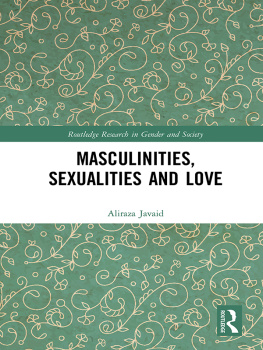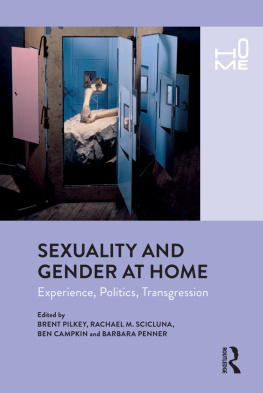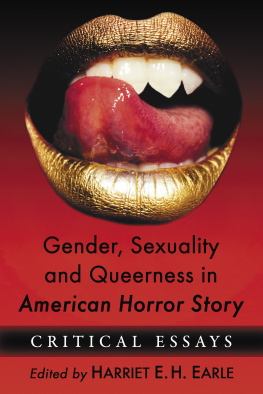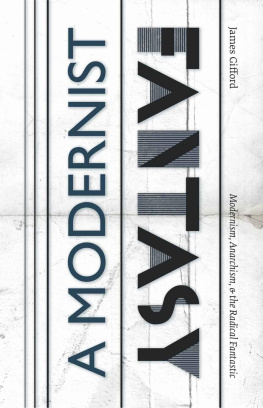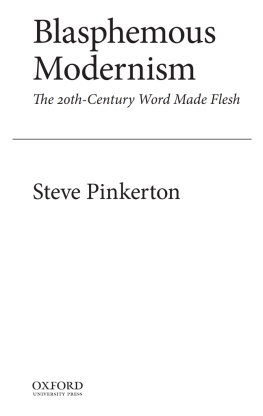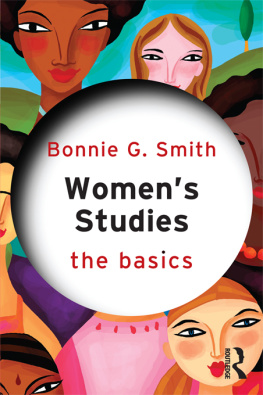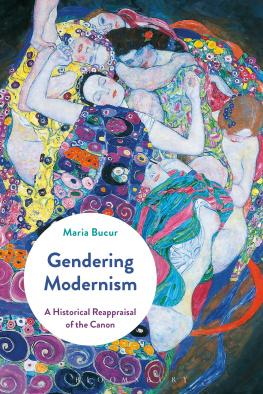Modernism, Sex,
and Gender
NEW MODERNISMS SERIES
Bloomsburys New Modernisms series introduces, explores, and extends the major topics and debates at the forefront of contemporary Modernist Studies.
Surveying new engagements with such topics as race, sexuality, technology, and material culture, and supported with authoritative further reading guides to the key works in contemporary scholarship, these books are essential guides for serious students and scholars of Modernism.
Published Titles
Modernism: Evolution of an Idea
Sean Latham and Gayle Rogers
Modernism and the Law
Robert Spoo
Modernism in a Global Context
Peter J. Kalliney
Modernisms Print Cultures
Faye Hammill and Mark Hussey
Modernism, Science, and Technology
Mark S. Morrisson
Modernism, Sex, and Gender
Celia Marshik and Allison Pease
Modernism, War, and Violence
Marina MacKay
Forthcoming Titles
The Global Avant-Garde
Christopher Bush
Modernism and Its Media
Chris Forster
Race and Modernisms
K. Merinda Simmons and James A. Crank
Modernism, Sex,
and Gender
Celia Marshik and Allison Pease

For Laura
There may be two names on the cover of this book, but Modernism, Sex, and Gender would not have come into being without the work of others. Our thanks are first to Gayle Rogers and Sean Latham, editors of the New Modernisms series, who gave us the opportunity to write this study and offered timely feedback as we worked. We also appreciate David Avitals encouragement and kindness; conversations with him helped us understand how to envision the project. The anonymous readers who reviewed our proposal shaped our work, and we appreciate their acuity.
As feminist critics, we benefited enormously from a circle of friends who pointed us to significant scholarship we might otherwise have missed. For reading drafts and offering feedback, we thank Melissa (Missy) Bradshaw, Tamar Katz, Elizabeth (Lily) Sheehan, Carey Snyder, and Julie Vandivere. We want to thank Adam McKible for the useful suggestions his wide reading afforded. When we prepared the manuscript for the press, Benjamin Blickle offered much appreciated assistance in pulling everything together. Funding for this work was provided by the Deans Office in the College of Arts and Sciences, Stony Brook University, and a grant from the Office for the Advancement of Research at John Jay College.
Finally, this book is dedicated to Laura Frost, who introduced us many years ago. The three of us wrote our second monographs together, an experience that provided us with opportunities for raucous lunches. This would have been a funnier book if she had written it with us, but we hope she enjoys reading it in the California sunshine.
It was all the books, all the literature in the world, right back to Juvenal . Education would always mean coming in contact with all that.
DOROTHY RICHARDSON, PILGRIMAGE, 1919
She had, it seems, no difficulty in sustaining the different parts, for her sex changed far more frequently than those who have worn only one set of clothing can conceive (2201). Virginia Woolf, chronicling the many clothing changes of the protagonist of Orlando, presents readers with a puzzle. In the 1928 novel, Woolfs title character suffers a disappointment in love and travels to Turkey, where Orlando experiences a miraculous and unexplained change of biological sex. After her return to England, Orlando ponders the role of clothing in identity, noting (for example) that wearing a skirt makes her feel and act feminine. At the same time, she embraces the performance of gender identity clothing allows her, dressing alternately in masculine and feminine garments to play different roles in eighteenth-century London.
This much is clear. But what did Woolf mean by asserting that her sex changed frequently? Does she mean to suggest that Orlando adopts masculine or feminine characteristics as the mood strikes? Might she intend readers to think that the characters sexual orientationthe desire for men or womendepends on the clothing Orlando adopts? Or could Woolf be signifying that Orlandos biological sex is itself transformed to suit the garment, moment, and mood? All of these interpretations are possible because Woolf wrote decades before the term gender came to signify (in 1945) masculinity and femininity, and a few years before sexual orientation took on the meaning (in 1931) of same- or opposite-sex desire. Readers cannot tell whether the author is deliberately playing with us or lacks the terminology to make her meaning plain.
One conclusion is obvious: Woolf wanted her readers to think about biological sex and gender and sexual orientation as they read Orlando. In this she was like many of her contemporaries: D. H. Lawrence in his (in)famous tribute to the mutual, heterosexual orgasm in Lady Chatterleys Lover; Djuna Barnes in her playful accounts of lesbian social circles in Ladies Almanack and Nightwood; E. M. Forsters fantasy of cross-class male romance in the posthumously published Maurice; or T. S. Eliots oblique references to abortion, homosexual pickup lines, and The Waste Lands transgender Tiresias. These examples are just a few of the many that might be offered as evidence of the modernist fascination with sex, gender, and desire.
New publications and theories, even nonliterary works, did not always find an easy hearing, however. Physician and sexologist Havelock Ellis would find his work censored; American birth control activist Margaret Sanger would be arrested and, after a hunger strike, forcibly fed. Many modernists had their texts banned, available only in foreign editions that were difficult to purchase. A partial list of those who found their work censored includes Radclyffe Hall, James Joyce, D. H. Lawrence, Wyndham Lewis, and Bernard Shaw, while other writers chose indirection (Nella Larsen, Amy Lowell, Gertrude Stein) or private and/or posthumous publication (Djuna Barnes, H. D., E. M. Forster).
If official censorship caused writers no end of frustration, then prevalent assumptions about who writers were, and what kinds of literature mattered, became perhaps even more pernicious. In 1855, Nathaniel Hawthorne had complained about the damned mob of scribbling women dominating American letters, and the generations who followed him were little more appreciative of work by female writers or writers of color. In the 1920s, James Joyce would joyfully opine that T. S. Eliot ends [the] idea of poetry for ladies (11). Even in the 1940s Edith Sitwell would write to a friend, Womens poetry, with the exception of Sappho and a few deep, and concentrated, but frightfully incompetent poems of Emily Dickinson, are simply awfulincompetent, floppy, whining, arch, trivial, self-pitying (116). It would be easy to compile pages of similarly nasty comments, but it is more difficult to assess the impact of a literary history that celebrated work by men. In her 1919 volume of Pilgrimage, The Tunnel, Dorothy Richardsons aspiring writer Miriam Henderson searches for woman in the index of a book and discovers listed as subtopics, inferior; mentally, morally, intellectually and physically her development arrested in her special functions; she later reads in the same volume, Woman is undeveloped man. Horrified, she contemplates, If one could only burn all the volumes, reflecting, But it was all the books, all the literature in the world, right back to Juvenal . Education would always mean coming in contact with all that (219220). If education inculcated one into womens inferiority writ large, there was the equally daunting challenge of aspiring to write in a value system that celebrated men only. Women wrote in great numbers, but they had to battle overt discouragement as well as structural hindrances: Woolf, Sylvia Beach, Harriet Shaw Weaver, Margaret Anderson, Jane Heap, Charlotte Osgood Mason, and others started their own presses and little magazines and offered patronage to writers, but publishers, editors, and patrons were still often men looking for work that was recognizably masculine. While the modernist period is really the time that witnessed womens changing status in relation to literature, it would take decades until the range of womens contributions to modernism were recognized and even, in some cases, widely read. There is still work to be done.
Next page


